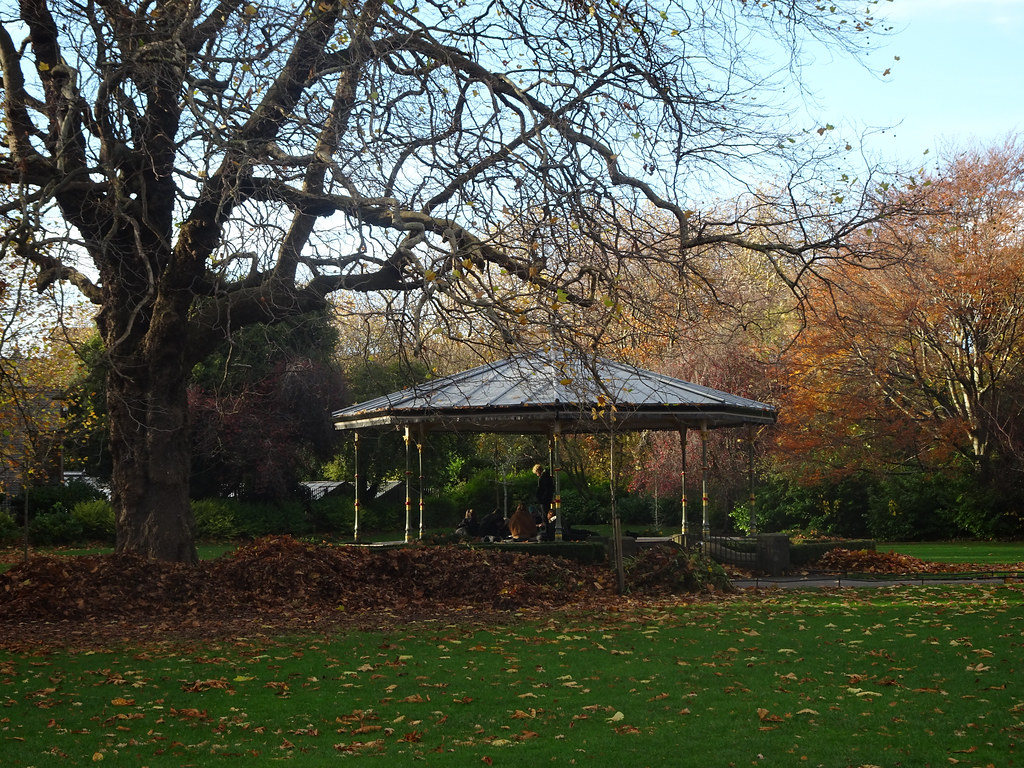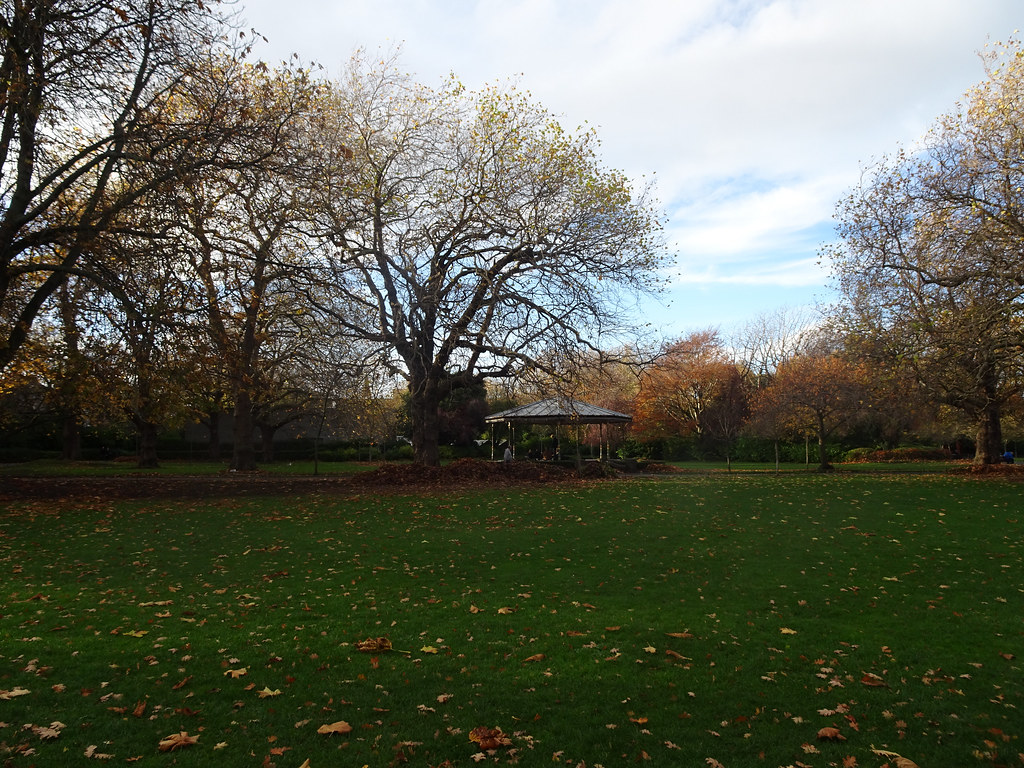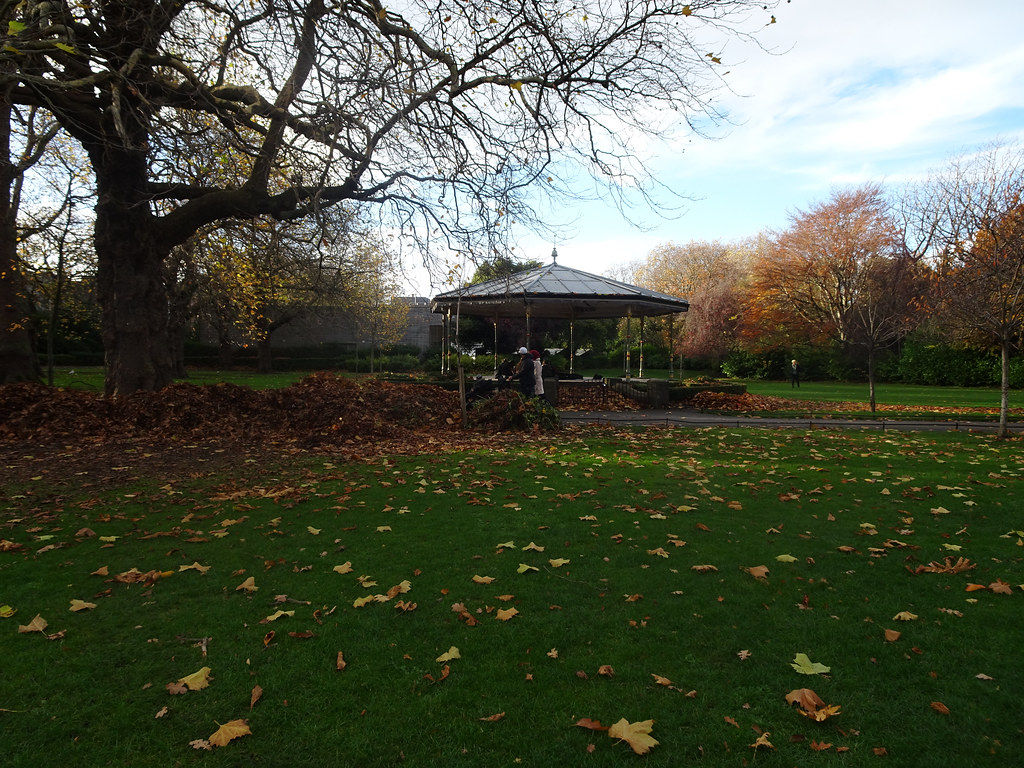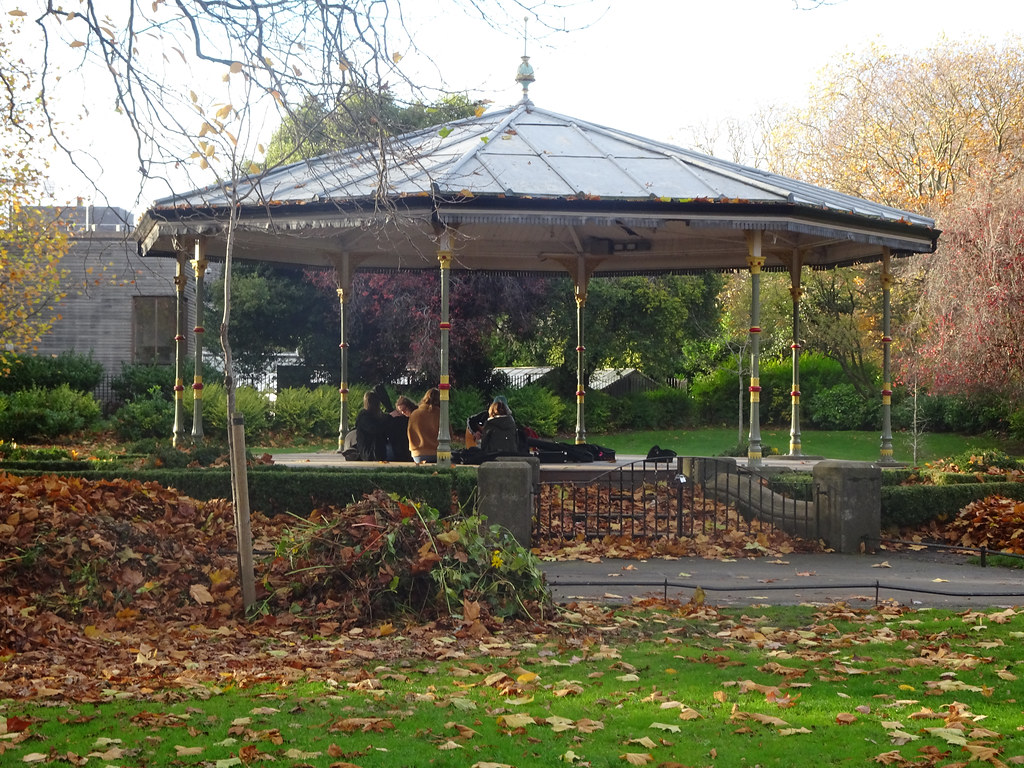THE BANDSTAND IN SAINT STEPHEN'S GREEN
While the central park of St Stephen's Green is one of three ancient commons in the city, its current layout owes much to the restorations of the 1800s.
The grounds are roughly rectangular, measuring (approximately) 550 by 450 metres, and are centred on a formal garden.
One of the more unusual aspects of the park lies on the north west corner of this central area, a garden for the blind with scented plants, which can withstand handling, and are labelled in Braille.
Further north again (and spanning much of the length of the park) is a large lake. Home to ducks and other water fowl, the lake is fed by an artificial water fall, spanned by O'Connell bridge, and fronted by an ornamental gazebo. The lakes in the park are fed from the Grand Canal at Portobello.
To the south side of the main garden circle is more open heath surrounding a bandstand, and often frequented by lunching students, workers and shoppers on Dublin's sunnier days.
There is also a playground (separated into junior and senior areas) which was refurbished in 2010.
Other notable features include:
the Fusiliers' Arch at the Grafton Street corner which commemorates the Royal Dublin Fusiliers who died in the Second Boer War.
a fountain representing the Three Fates inside the Leeson Street gate. The statue was designed by Joseph Wackerle in bronze in 1956. It was a gift from the German people in thanks for Irish help to refugee children following World War II. Up to five hundred children found foster-homes in Ireland in a project named Operation Shamrock.
a seated statue of Lord Ardilaun on the western side, the man who gave the Green to the city, facing the Royal College of Surgeons which he also sponsored (again, see History above)
the Yeats memorial garden with a sculpture by Henry Moore
a bust of James Joyce facing his former university at Newman House
a memorial to the Fenian leader Jeremiah O'Donovan Rossa near the Grafton Street entrance
a bronze statue at the Merrion Row corner of Theobald Wolfe Tone, the leader of the 1798 rebellion.
a memorial to the Great Famine of 1845–1850 by Edward Delaney
a bust of Constance Markievicz on the south of the central garden (see History above)
a statue of Robert Emmet standing opposite his birthplace (now demolished) at No 124.
a memorial bust of Thomas Kettle, fatality of the Great War. The attempt to erect a commemorative portrait bust of Kettle was beset by controversy until it was finally placed, without official unveiling, in the centre section.
The grounds are roughly rectangular, measuring (approximately) 550 by 450 metres, and are centred on a formal garden.
One of the more unusual aspects of the park lies on the north west corner of this central area, a garden for the blind with scented plants, which can withstand handling, and are labelled in Braille.
Further north again (and spanning much of the length of the park) is a large lake. Home to ducks and other water fowl, the lake is fed by an artificial water fall, spanned by O'Connell bridge, and fronted by an ornamental gazebo. The lakes in the park are fed from the Grand Canal at Portobello.
To the south side of the main garden circle is more open heath surrounding a bandstand, and often frequented by lunching students, workers and shoppers on Dublin's sunnier days.
There is also a playground (separated into junior and senior areas) which was refurbished in 2010.
Other notable features include:
the Fusiliers' Arch at the Grafton Street corner which commemorates the Royal Dublin Fusiliers who died in the Second Boer War.
a fountain representing the Three Fates inside the Leeson Street gate. The statue was designed by Joseph Wackerle in bronze in 1956. It was a gift from the German people in thanks for Irish help to refugee children following World War II. Up to five hundred children found foster-homes in Ireland in a project named Operation Shamrock.
a seated statue of Lord Ardilaun on the western side, the man who gave the Green to the city, facing the Royal College of Surgeons which he also sponsored (again, see History above)
the Yeats memorial garden with a sculpture by Henry Moore
a bust of James Joyce facing his former university at Newman House
a memorial to the Fenian leader Jeremiah O'Donovan Rossa near the Grafton Street entrance
a bronze statue at the Merrion Row corner of Theobald Wolfe Tone, the leader of the 1798 rebellion.
a memorial to the Great Famine of 1845–1850 by Edward Delaney
a bust of Constance Markievicz on the south of the central garden (see History above)
a statue of Robert Emmet standing opposite his birthplace (now demolished) at No 124.
a memorial bust of Thomas Kettle, fatality of the Great War. The attempt to erect a commemorative portrait bust of Kettle was beset by controversy until it was finally placed, without official unveiling, in the centre section.





